St. Nics Durham Market Place
Religious Place In Durham, County Durham
A stunning church providing a backdrop for Durham Market Place and a lively place in which to worship.
Durham's Market Place is a mecca of monuments and architecture and The Church of Saint Nics is one to admire. I thank Revd Will Foulger and Janet Dawson (Administrative Assistant) for their time and insights detailing some of St. Nics delights.
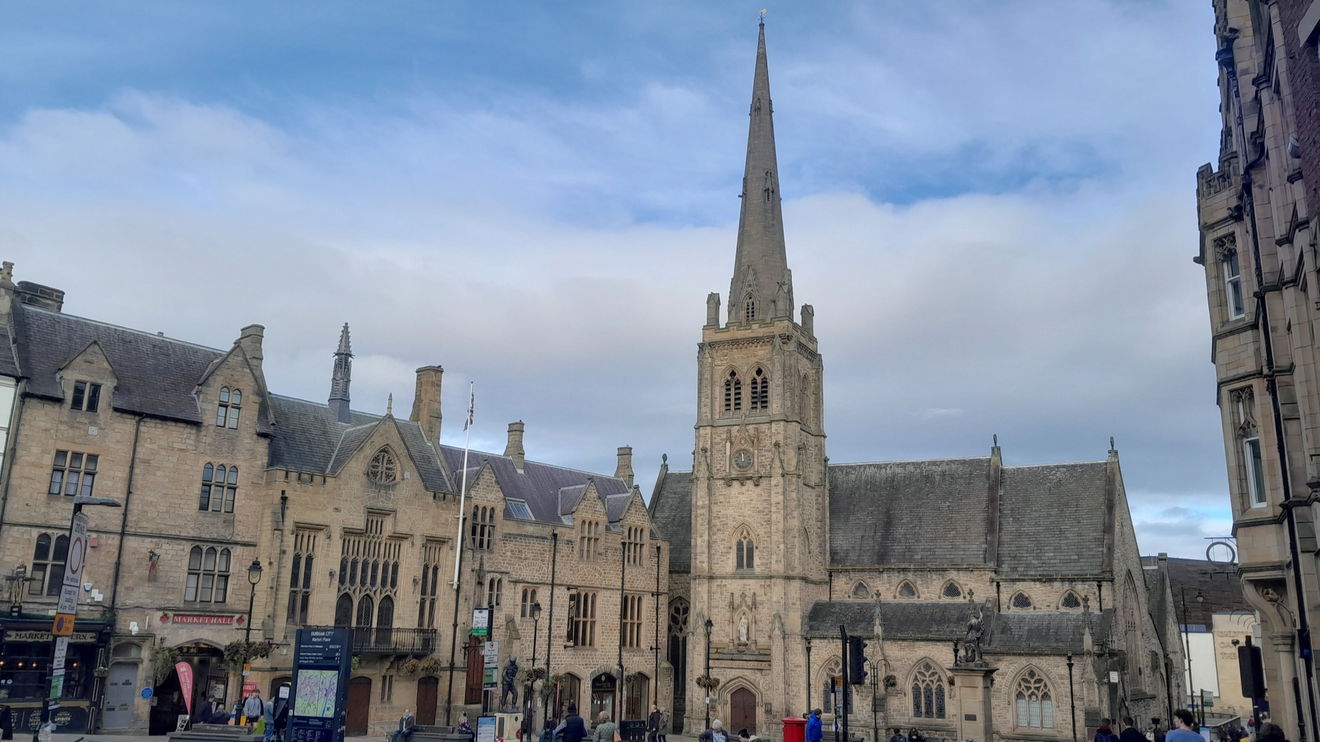
The church in the Market Place has always been called Saint Nicholas which comes from the Greek Victor of People. He is the patron saint of sailors, merchants, archers, repentant thieves, children, brewers, pawnbrokers, and unmarried people. These days the church is colloquially known as St. Nics.
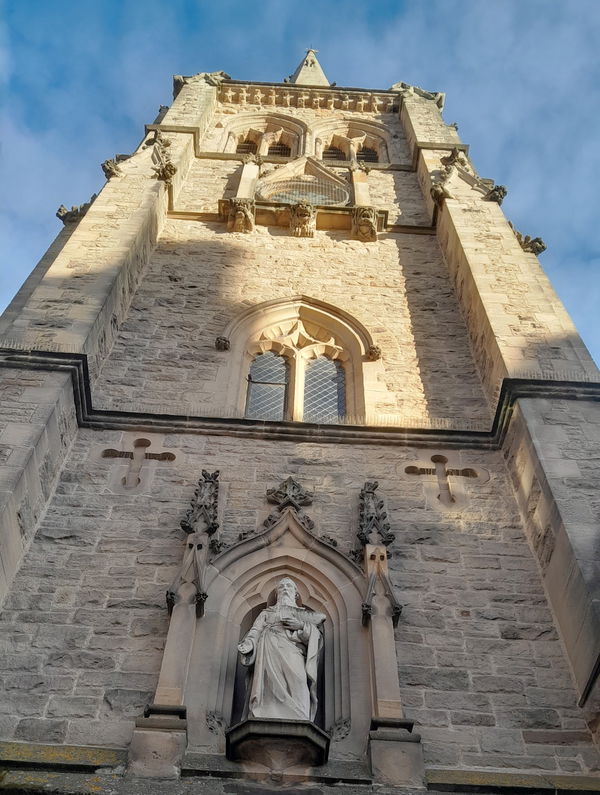
The church is on the site of an earlier church dating back 1000 years, however it suffered significant damage particularly during the Scottish invasion in 1310 when much of Durham was razed. It was then built with a square tower.
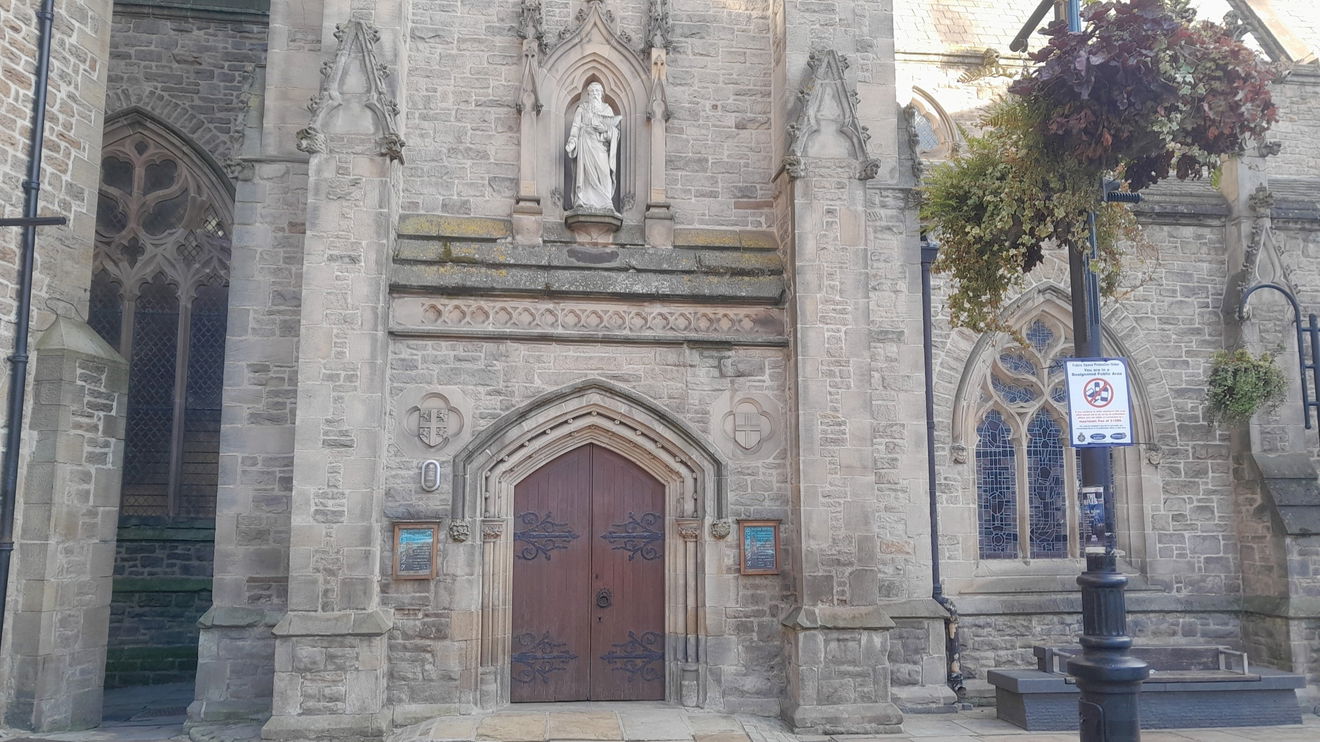
St Nics is the only detached building in the marketplace, so take a walk around as there are back stairs between the Town Hall, market, and church. It has that medieval look with the stonework.
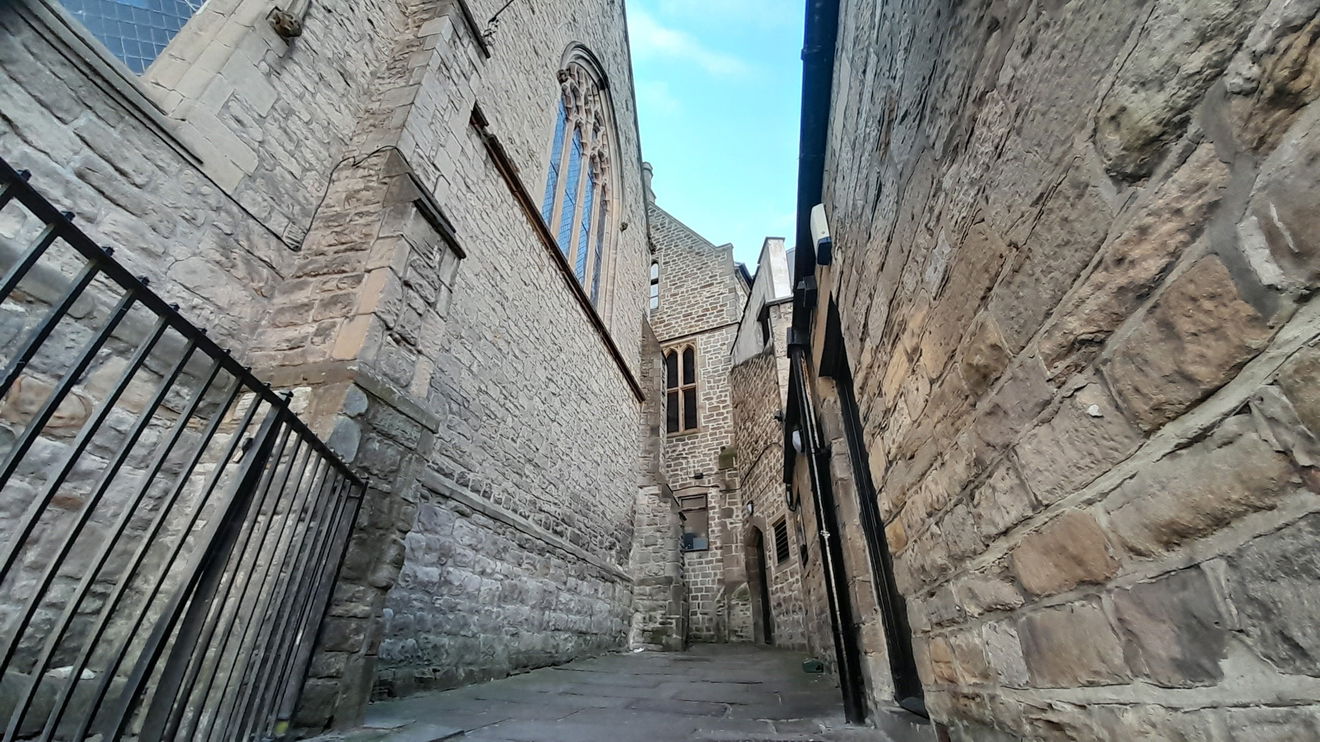
In medieval times, the church stood adjacent to the entrance to Durham town. There is a plaque on the northeast corner. Many travellers could have given thanks to God in the church back then and today the congregation has many visiting academics from the University.
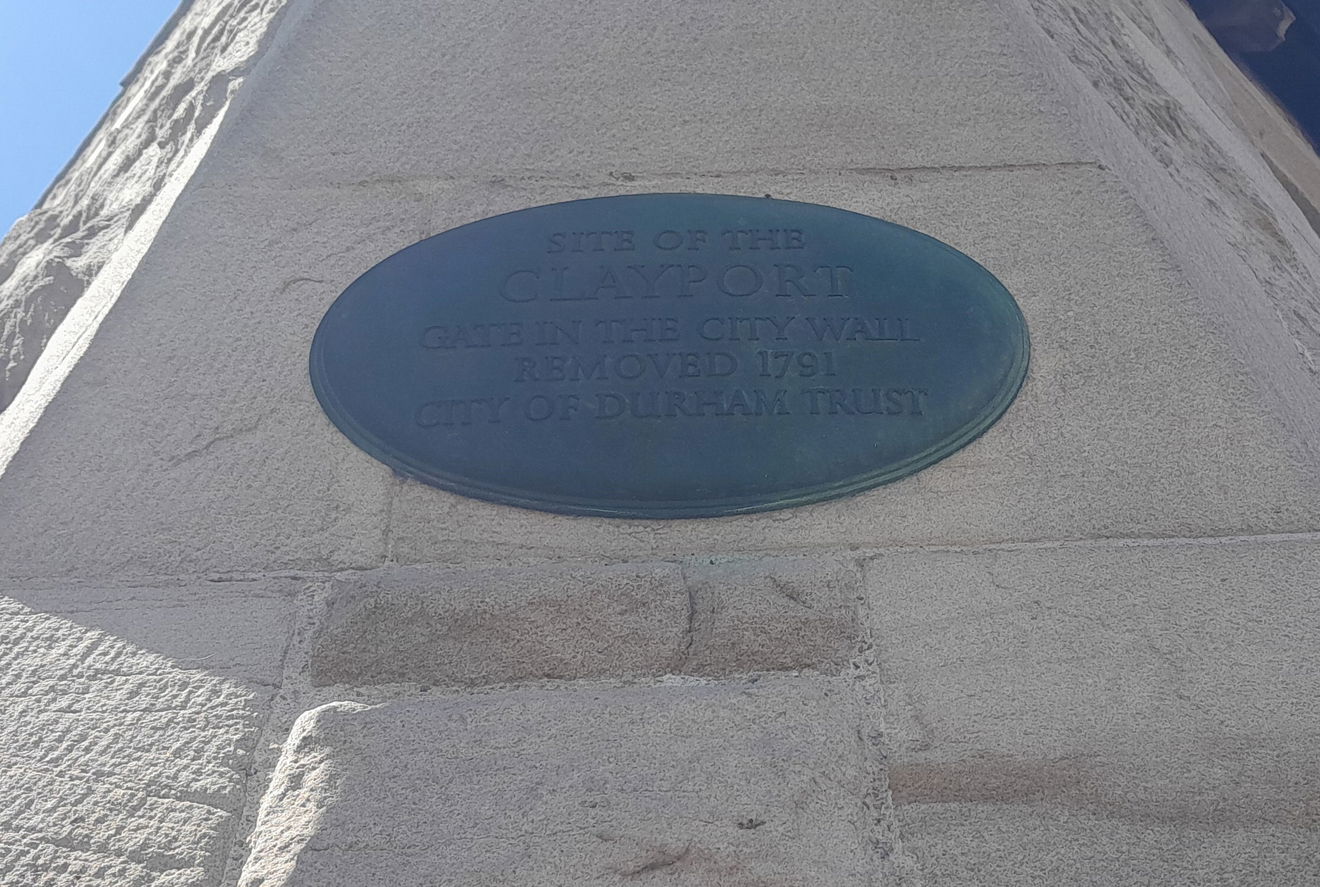
There was a small churchyard in the south front where many monuments and statues are carefully sited in the Market Place. Janet Dawson (Administrative Assistant at St Nics) told me there were bones found in another part of the marketplace that were reburied after being consecrated in their graveyard at the bottom of Providence Street.
Since the mid 16th century Parish registers were kept for births, deaths, and marriages. Henry VIII's court made it compulsory.
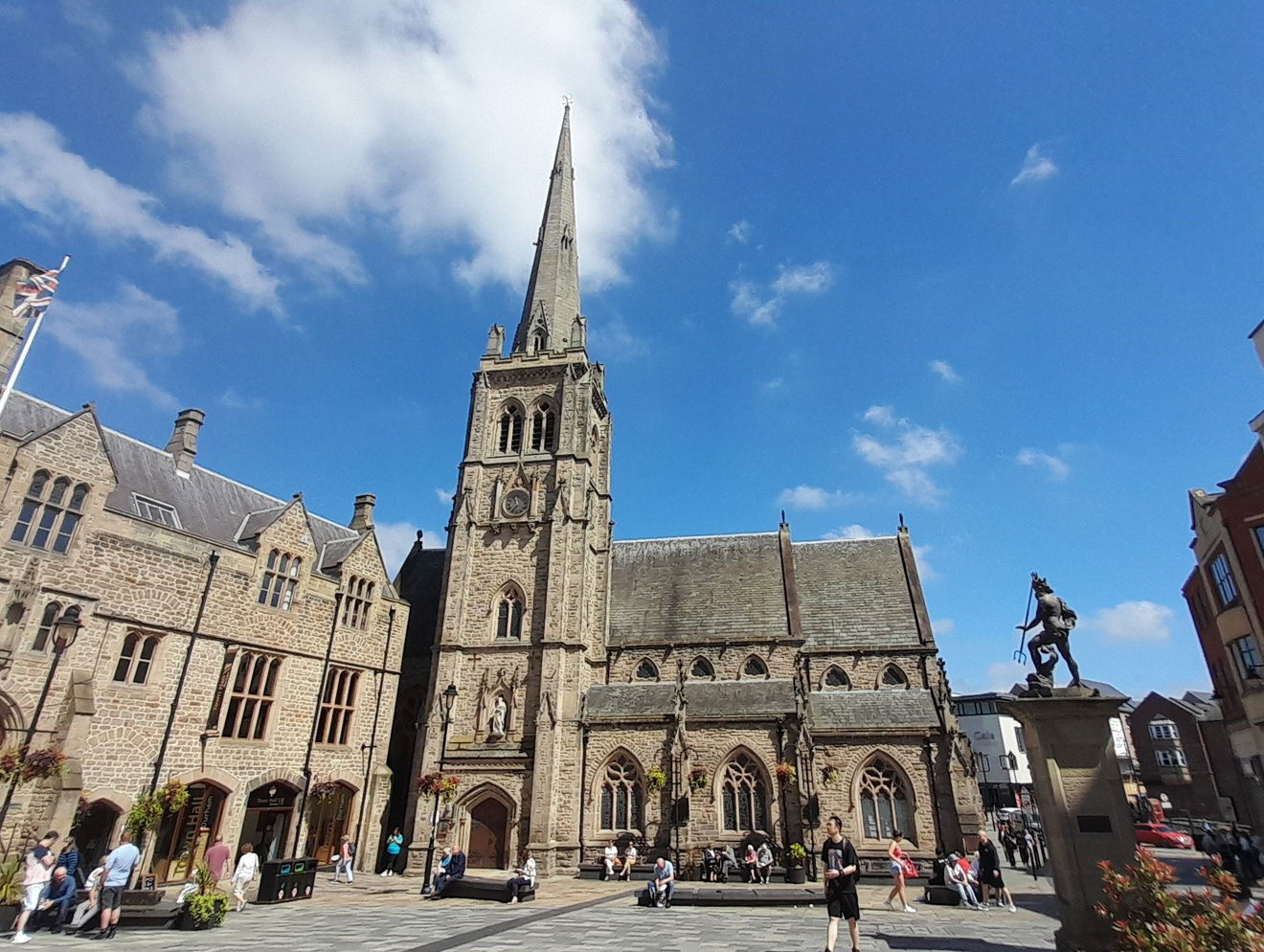
In 1825 Sir Stephen Glynne (9th Baronet) (1807 to 1874) was an assiduous antiquary particularly of church architecture and said of St Nicholas
"A large structure, & displays some marks of antiquity, although the barbarous hand of innovation has swept nearly all before it", and that its windows "alas! are of too sad a description to be mentioned". He did, however, note that it was "neatly pewed" and that the South porch was "good Perpendicular”
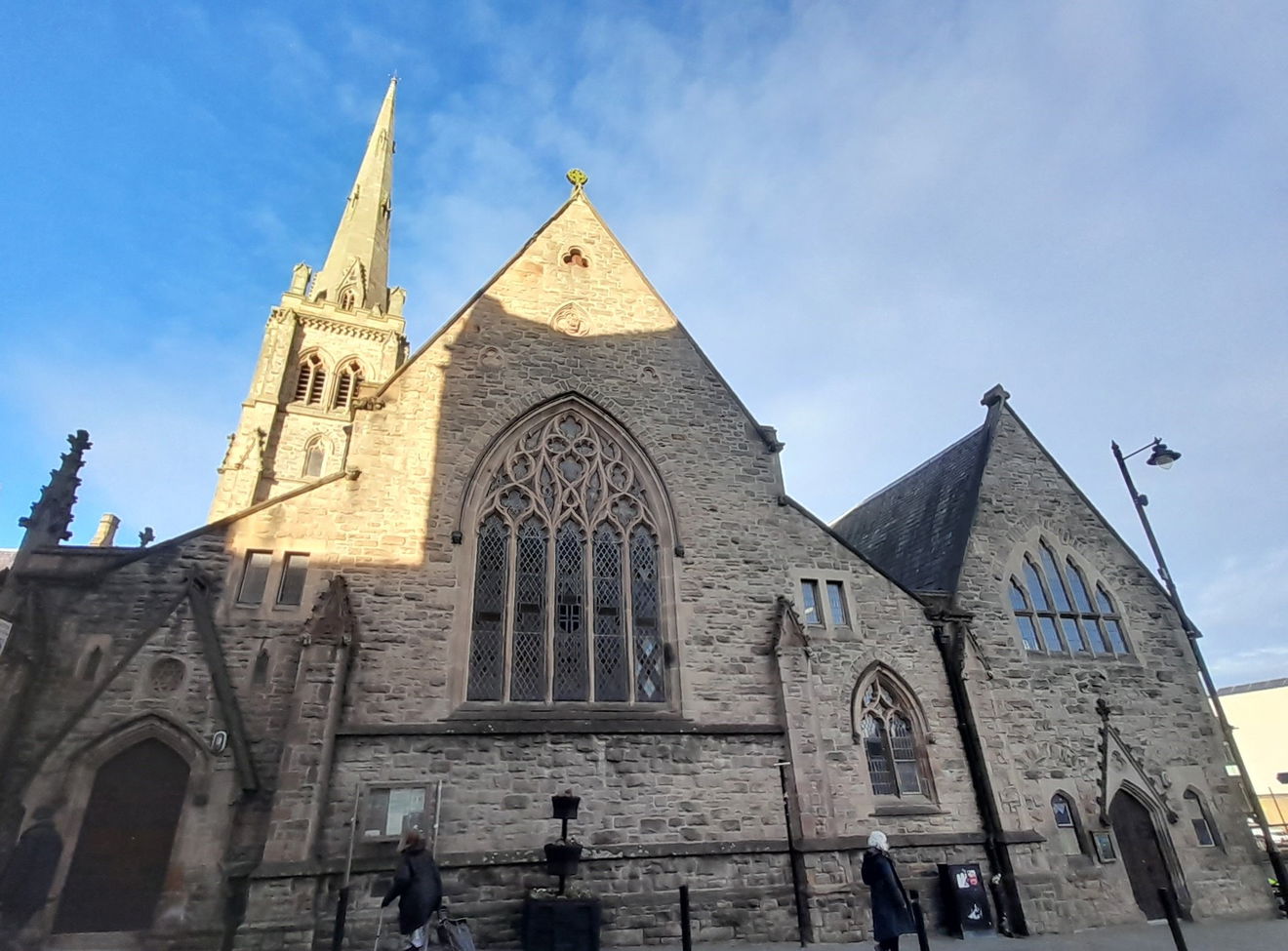
In 1854 James Pigott Pritchett Jr. (1830 to 1911) an architect from Darlington, was employed to renovate the church. Unfortunately it was in such a state that it was demolished. The Revd. G.T. Fox and the late Marchioness of Londonderry both contributed around £1000 for rebuilding it. The rest was raised by public subscription. The new splendid St Nics was built in the 14th-century perpendicular Gothic style. The spire was added at the insistence and cost of the Revd. Fox. He even brought property nearby which was then demolished so that St Nicholas could stand alone in all its glory.
The spire certainly has you looking up. It houses 6 bells, 5 of which date from the old church to 1687.
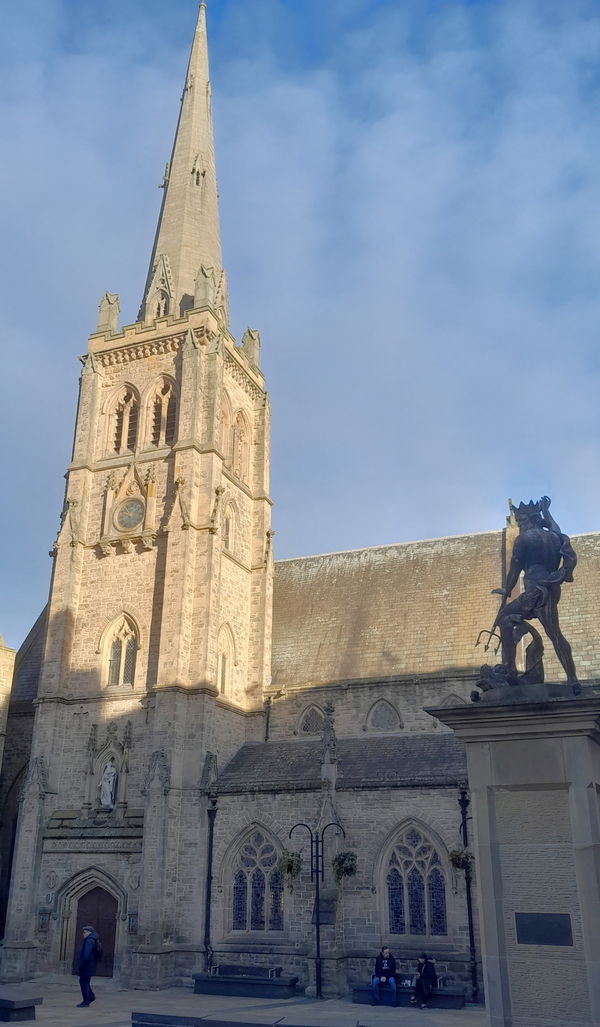
I am guessing stones from the demolished church were used again. It is snecked sandstone where the work is not uniform and smaller pieces are used to fill gaps.
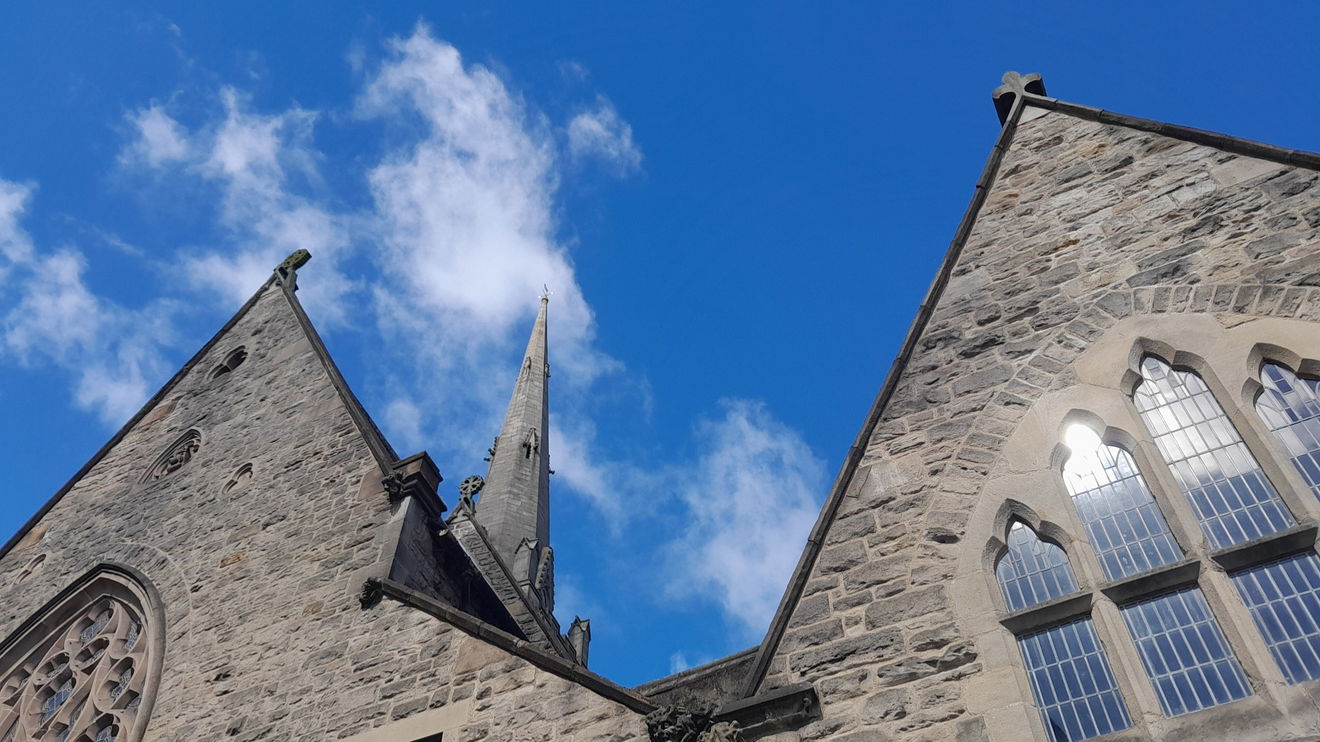
The Church is attractive inside and outside. Inside it has a lovely fresh feeling to it, with daylight pouring in.
The Reverend Will Fourger welcomed me into the church and I am grateful I was able to have a look around. The door unfortunately tends to be locked as there are characters that do not treat the building with respect.
Will told me that the congregation now faces west instead of the traditional east. They have faced south and north too, so they have done a 360!
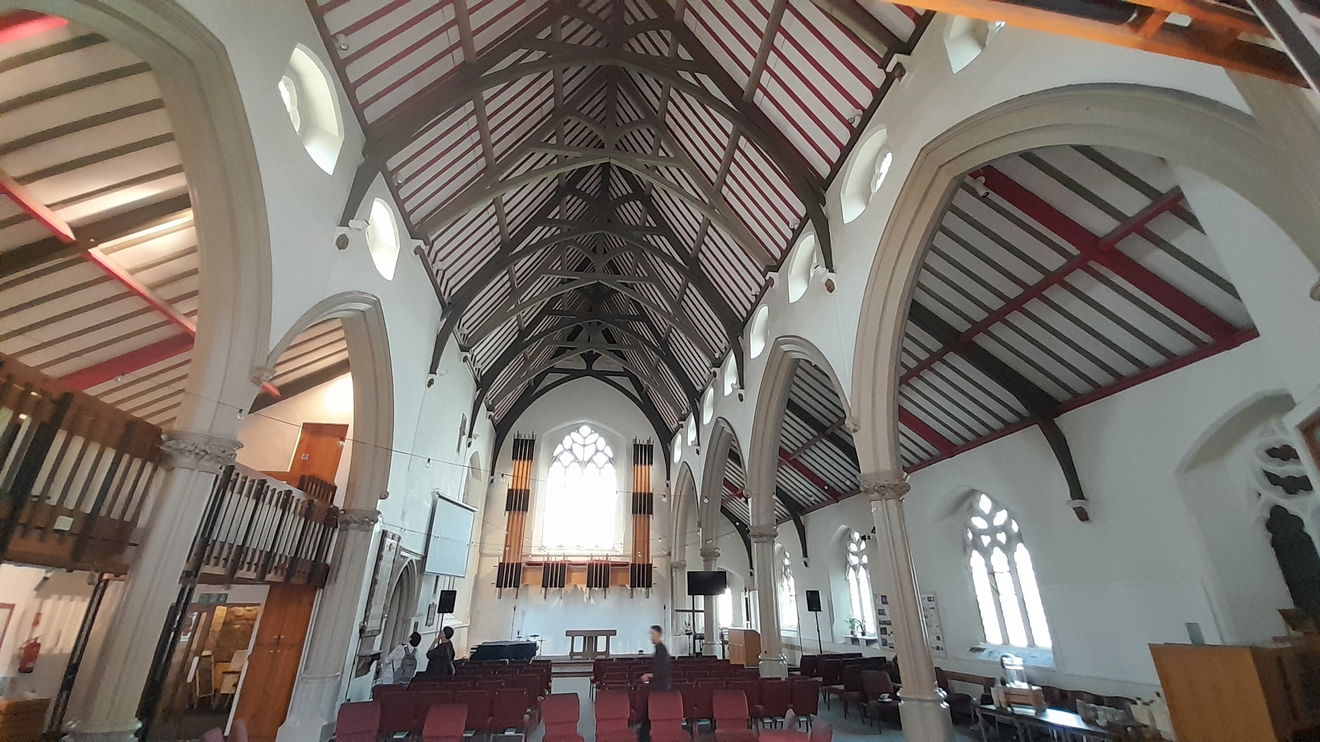
The Revd. George Cary (born 1935) who later became the Archbishop of Canterbury was the vicar of St Nics from 1975 to 1982. The church was in much need of renovation, the roof leaked, the heating had packed up and the organ needed replacing. Under his watch, he renovated the church. It took a few years of planning and fortunately, a relatively short period to raise the necessary funds. It was restructured with removal of the pews to allow flexible seating arrangements.


Looking up at the roof you see the king post roof and strong arch-braced collars. The ceiling is painted referencing medieval times. It certainly gives a pleasing spacious aspect.
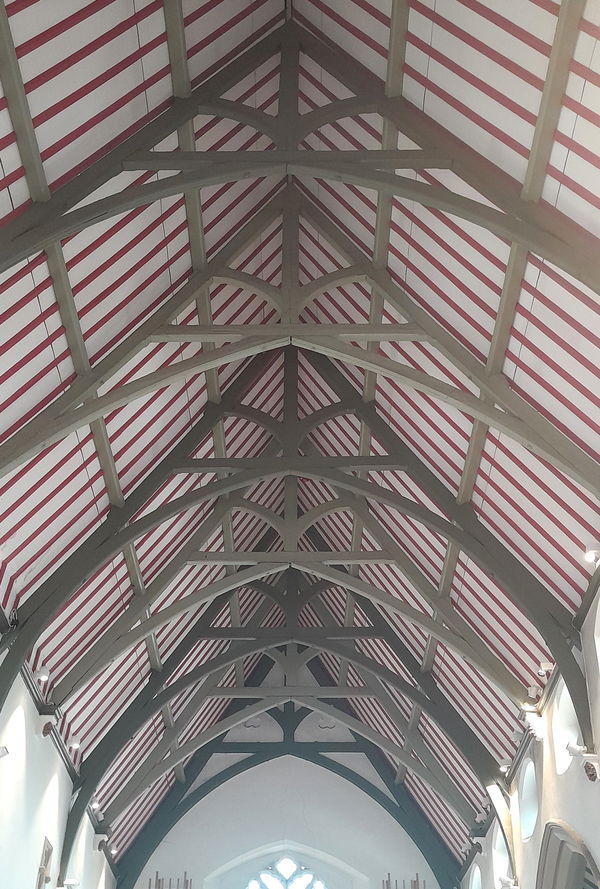
Ronald Sims (1926 to 2007) was an ecclesiastical architect and was employed to take on this challenge of repair and renovation. As Wikipedia says:
"His style combined modernism with a respect for tradition and particularly the Arts and Crafts movement."
He designed the wrought iron cross that graces the Chancel arch just before the east window. From the guide book it states:
"The cross is a universal symbol which points to the centrality of Christ's death for the Christian faith[..] emphasizes the pain and suffering of Christ by means of the brutality of the elongated nails and the crown of thorns."
The letters above the cross INRI are for the Latin Iesus Nazarenus, Rex Iudaeorum
In English it means Jesus of Nazareth, the King of the Jews. This is what Judas is believed to have said to betray Jesus.
In Roman times it was customary to inscribe the reason for their crucifixion above their heads.



There is the Christian symbol of a fish on the other side of the porch window. Made in metal with subtle coloured glass. It sits nicely in one of the Victorian arches that are adorned with ball flowers
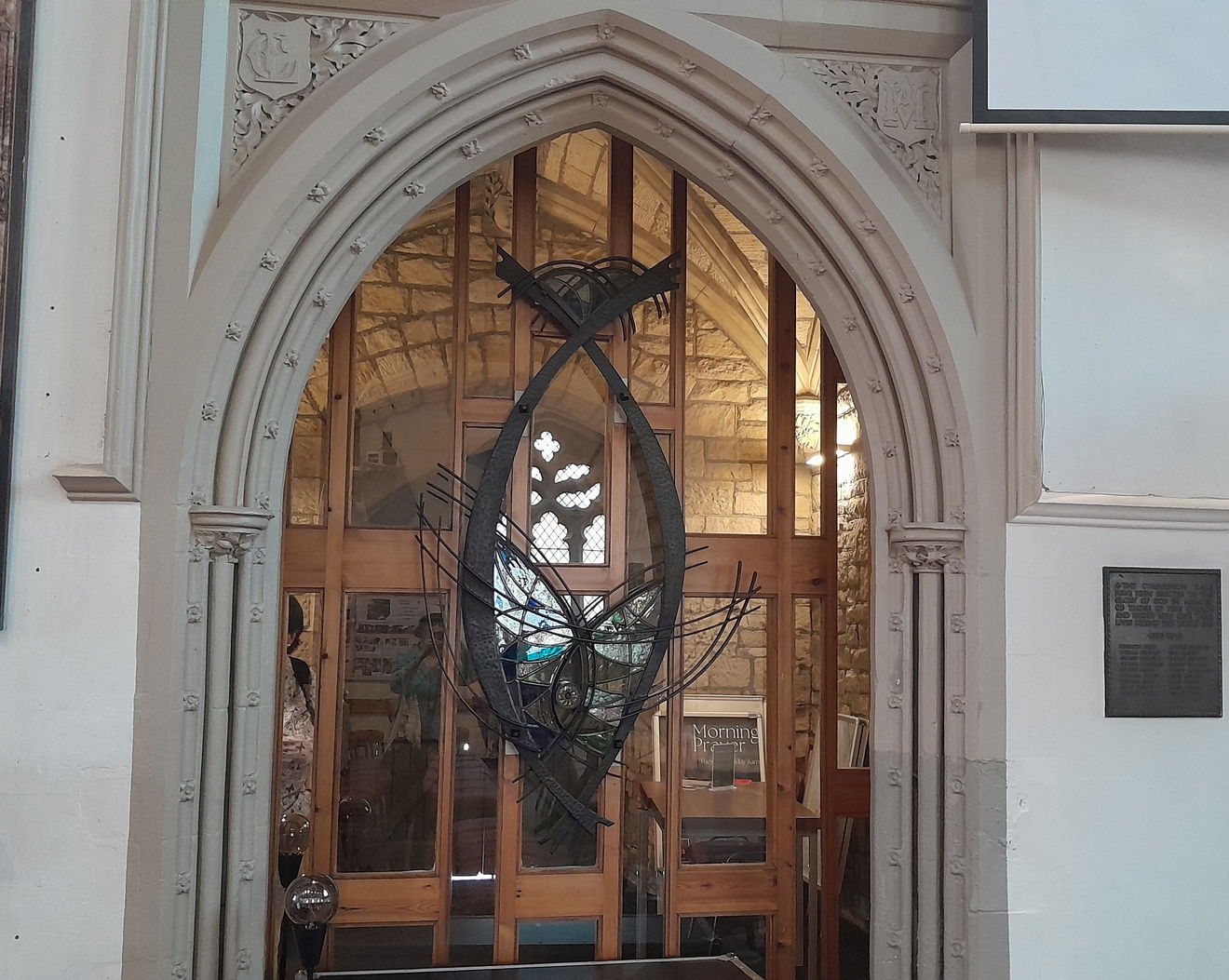
Within the building, the stained glass windows are modern in design. some were gifted in 1958 by the owners of Durham Waterworks, with the tracery commemorating Ralph Dixon.
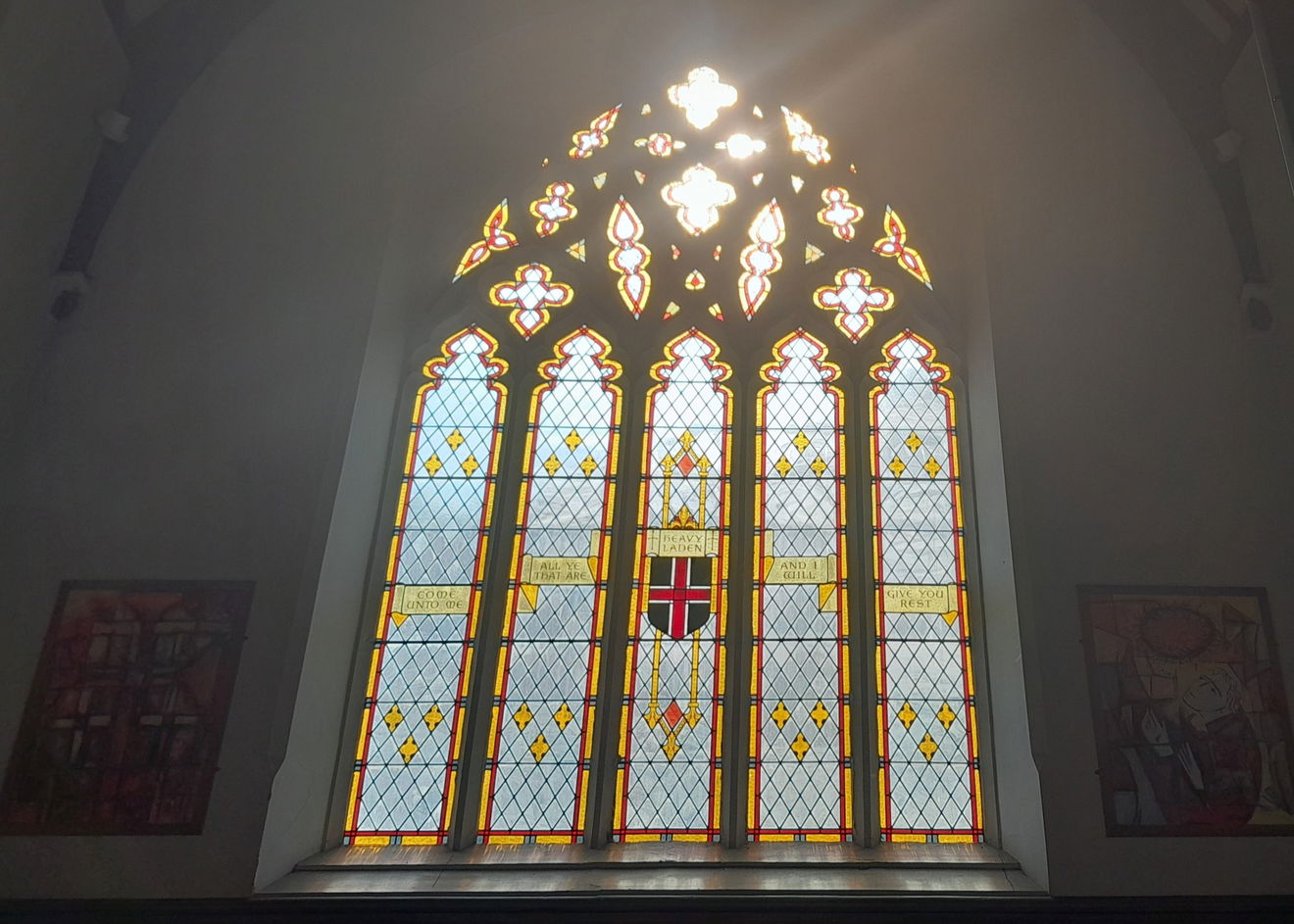
Other windows were installed in 1961. The renowned designer Leonard. C. Evetts (1909 to 1997) was from the fine arts department at the Newcastle part of Durham University. His style used medieval techniques by using glass of different thicknesses and colour, and irregular shapes, giving a jewelled appearance.
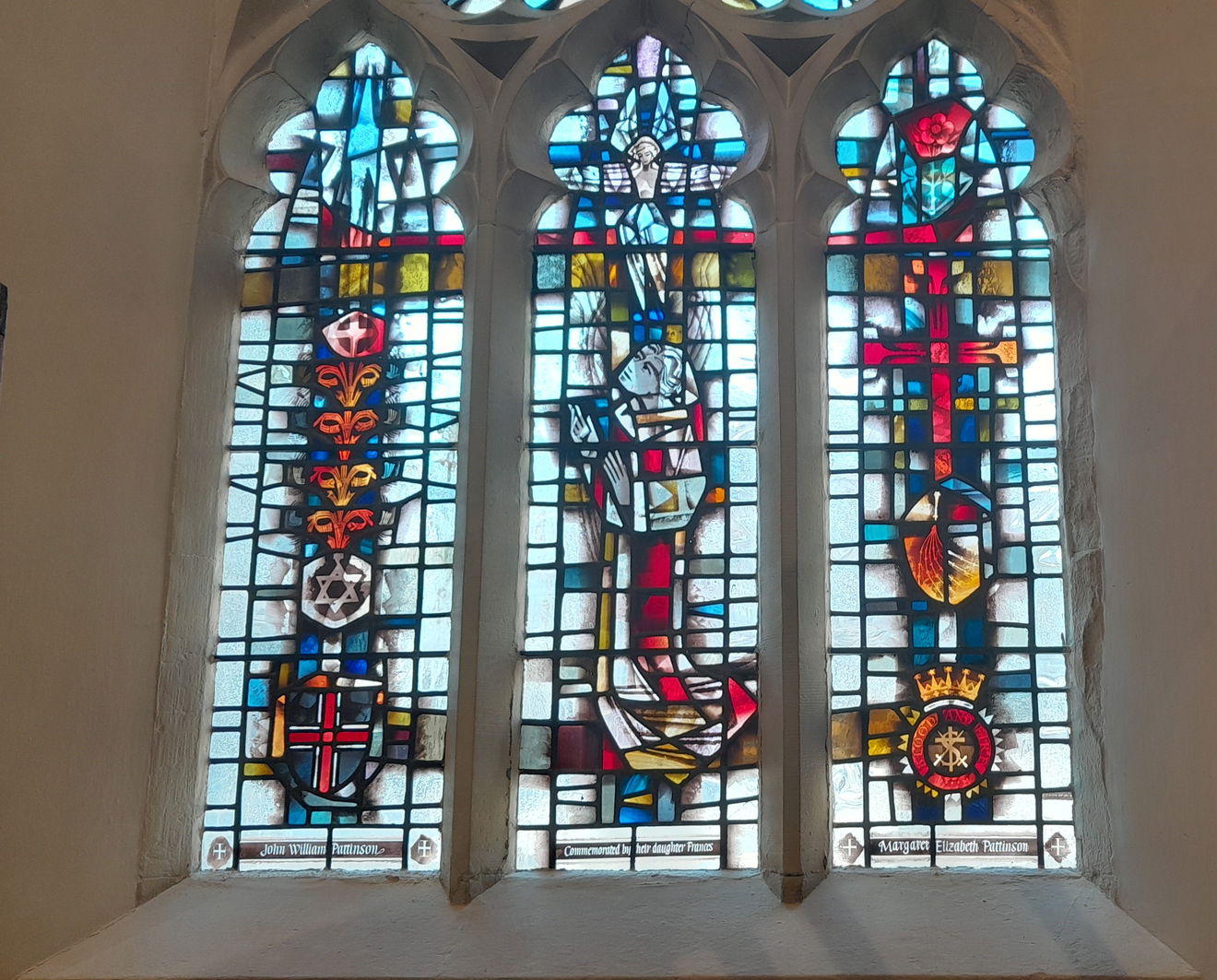
The west window is framed with what looks like an arty installation. These are the speakers for the organ set in some aesthetically pleasing woodwork.
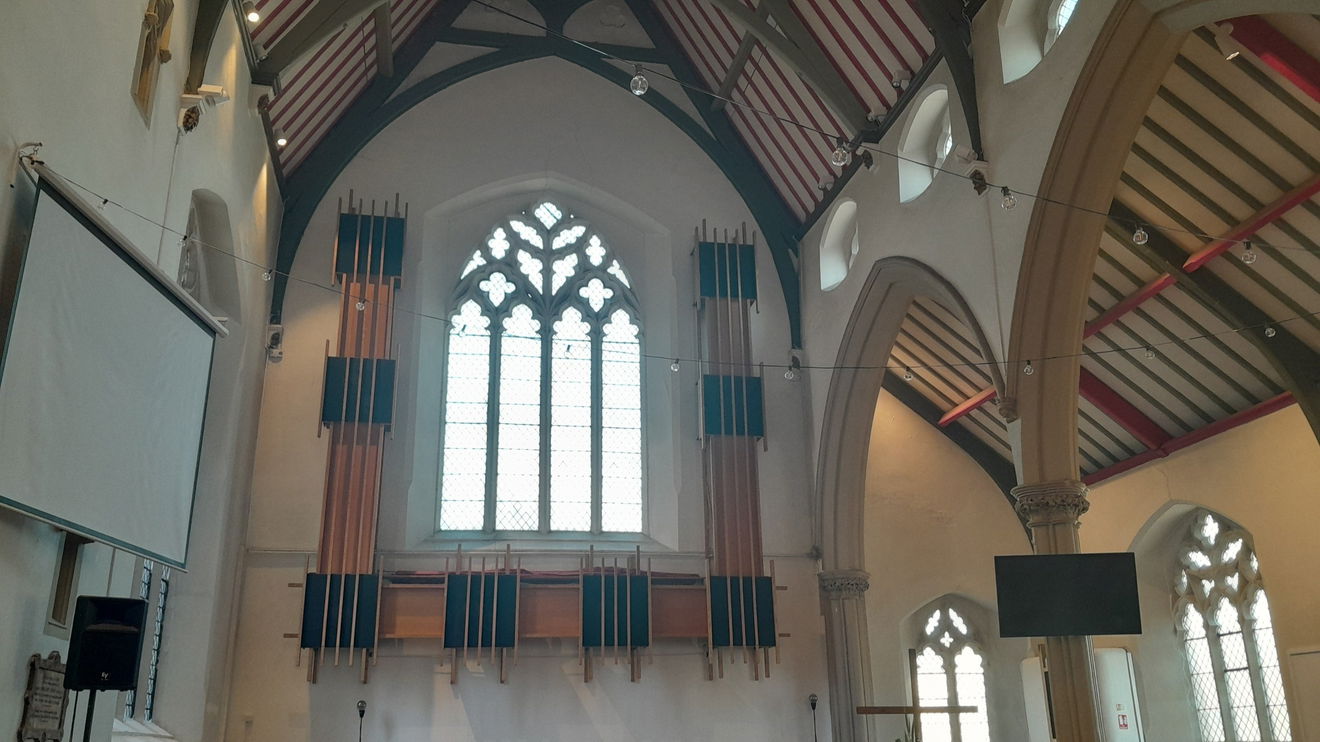
Janet says some people when they come in think it is the actual Durham Cathedral and others call it the Ikea church. Whatever you think be thankful we still have these sacred places.
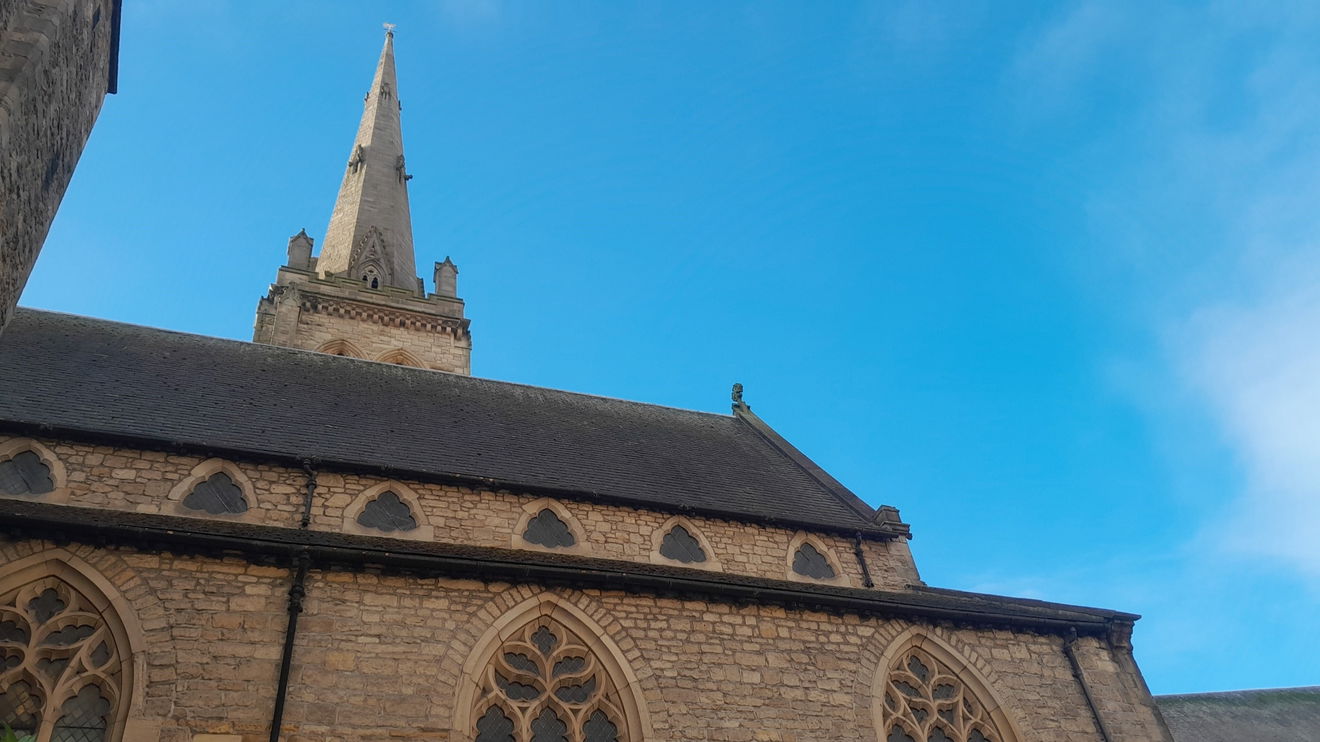
Get 2 points if you have visited this place. Already visited by 143 VIPs.
Login to the VIP area to add places to your bucket list, mark them as visited and more importantly see where you rank on the league table.
How To Find St. Nics Church Durham
Where Is St. Nics Church Durham?
Lat / Long
54.777369, -1.5755
What three words
Where To Park For St. Nics Church Durham?
Lat / Long
54.777046, -1.573723
What three words
Parking is available in the area. The multistorey Prince Bishops is the closest.
Contributed by Rosalind Parker
Thank you for reading. I hope it sparks your interest. It’s always a pleasure to get out and explore, whatever the weather. I enjoy uncovering little snippets of information, especially when they’re obscure, amusing, or meaningful. All photos were taken on a mobile phone.
More Places from Rosalind
More Places In Durham
Find more fabulous places in Durham, County Durham and if you know of a place we haven't listed, then let us know.
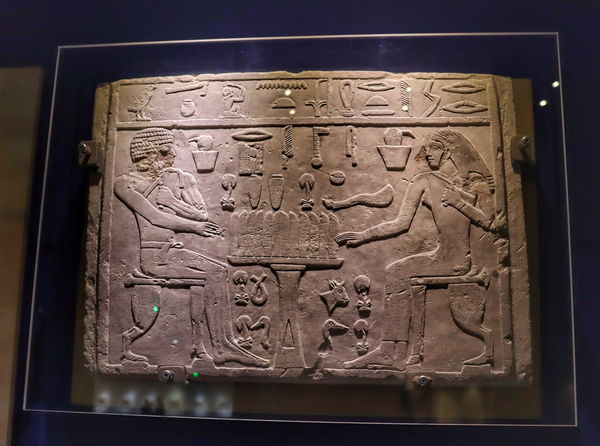
Oriental Museum
Museum Durham County DurhamA museum containing collections from cultures and histories of northern Africa to Asia including more than 30,000 objects of art, textiles, ceramics, and manuscripts.
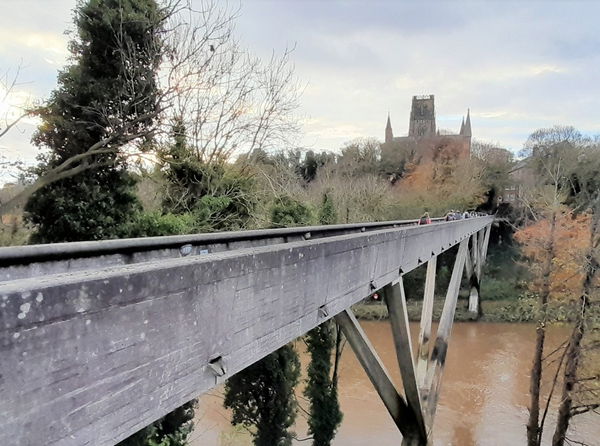
Kingsgate Footbridge
Bridge Durham County DurhamModernist footbridge completed without using scaffolding in 1963
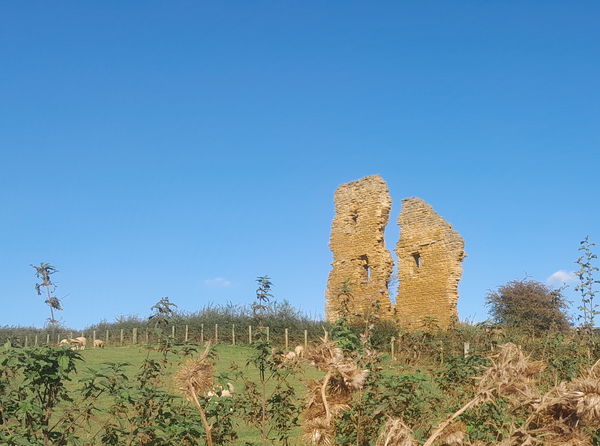
Ludworth Tower
Tower Durham County DurhamRemains of a romantic looking pele tower on a hill with scenic views.
More Religious Places
So this religious place wasn't enough and you want more? Don't worry we have you covered.

St Cuthbert's Corsenside
Religious Place Ridsdale NorthumberlandThe smallest place of sanctuary, rolling out of West Woodburn, between the road and the river, lies the church of St Cuthbert's, Corsenside.
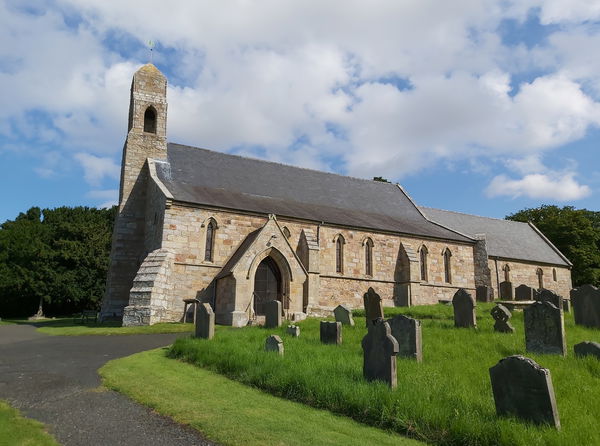
St Michael and All Angels Church
Religious Place Ford And Etal NorthumberlandA 13th century church located in the grounds of Ford Castle, later restored by John Dobson.
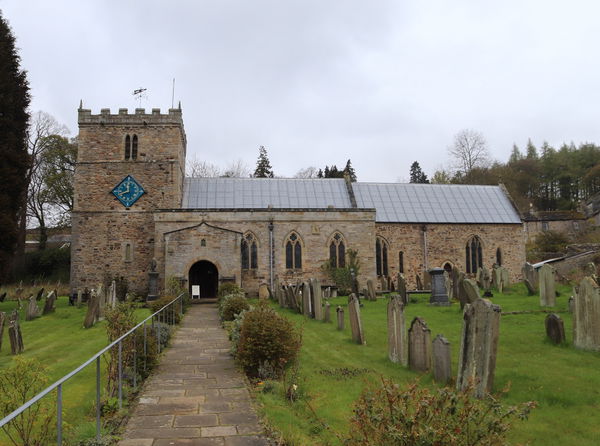
St Thomas the Apostle Church
Religious Place Stanhope County DurhamA Grade II* listed Church, dedicated to St Thomas the Apostle, in Stanhope.
Never Miss A Fabulous Place
If you are afraid of missing out on all the fabulous places we post, or just want to be the first to know, then sign up to the Fabulous North.
Each week we will email you all the brand new places that we visit.
Sign Up To AlertsFind Us On Facebook
We post all our new places daily on our Facebook Groups page, so join the group today and be notified when we add a new place.
Join Our Facebook GroupSt. Nics Church Durham was listed in Religious Place // County Durham // Durham

